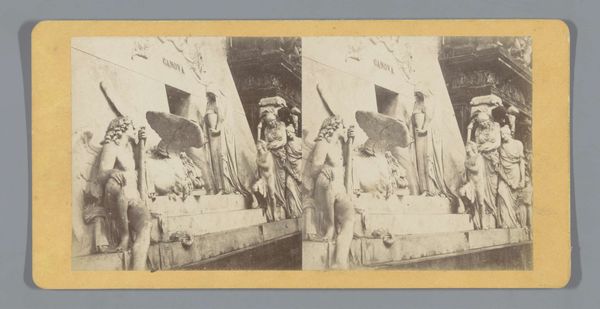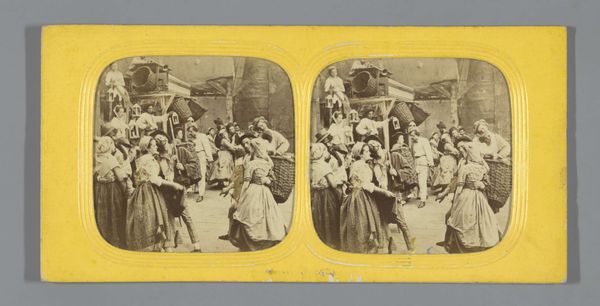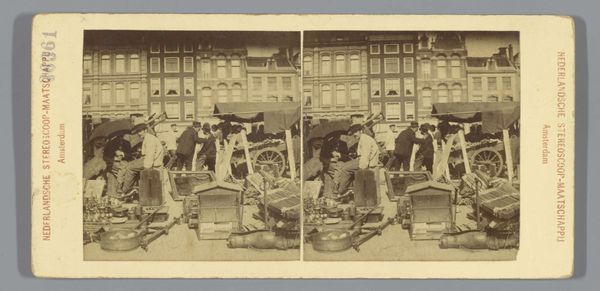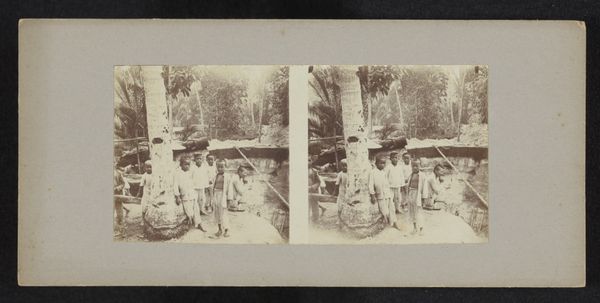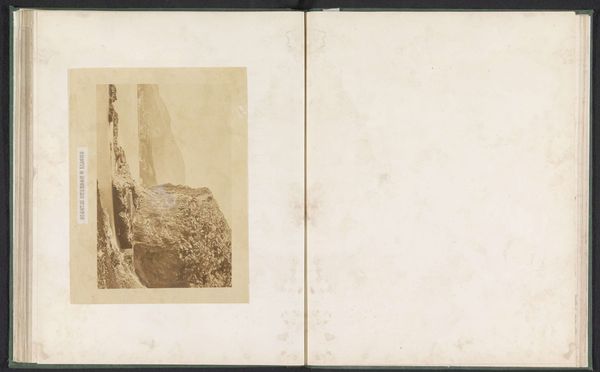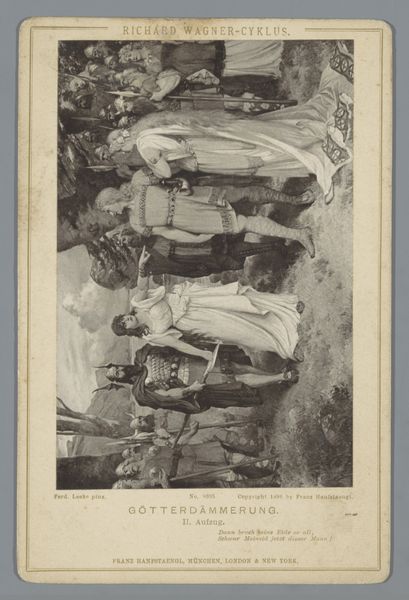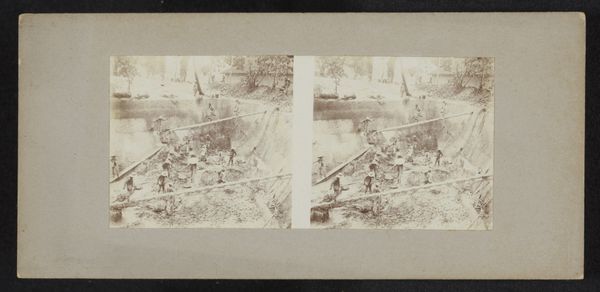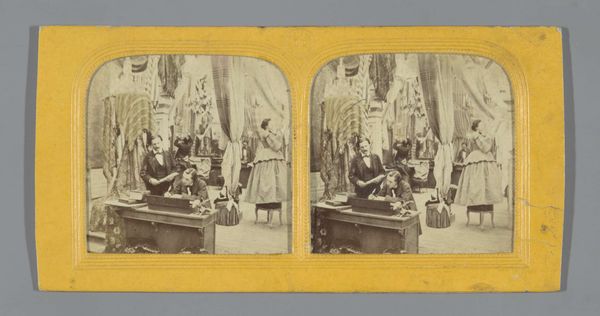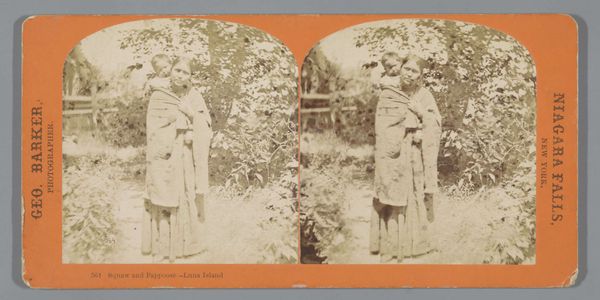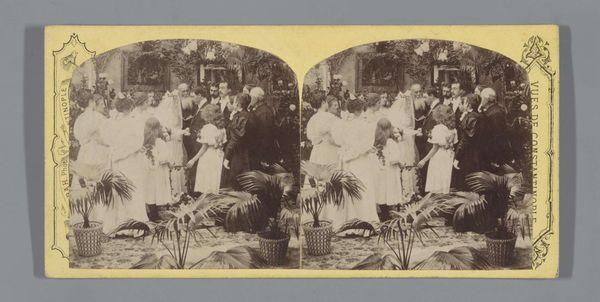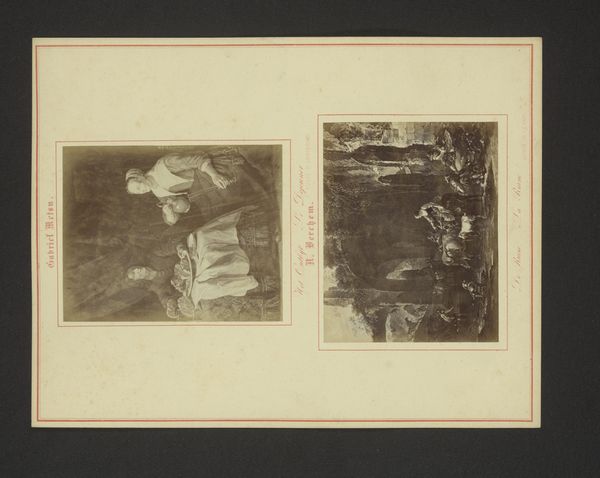
Gezicht op de tombe van Antonio Canova in de Basilica di Santa Maria Gloriosa dei Frari in Venetië 1872 - 1876
0:00
0:00
Dimensions: height 88 mm, width 176 mm
Copyright: Rijks Museum: Open Domain
Curator: This stereo card from between 1872 and 1876, by Jean Andrieu, captures the tomb of Antonio Canova inside the Basilica di Santa Maria Gloriosa dei Frari in Venice. Editor: It's ghostly, almost like looking at a memory fading. The sepia tone contributes to that, along with the slight blur of the image. Curator: Andrieu's photographic process would have certainly been central to creating this aesthetic, the gelatin-silver print method allowing for mass reproduction and wide circulation. These stereo cards were early forms of virtual tourism. Editor: Absolutely. And to consider this image in terms of labor—the extraction of silver, the production of glass plates, the photographer's skill. How did these factors influence its composition and consumption? Curator: We have to acknowledge the ways Venice became fetishized through a lens of the exotic during this time period. This ties to gender and power. Who has the power to produce the image and who is it intended for? The Western, male gaze becomes inherently relevant. Editor: Precisely. This tomb is a tribute to Canova, the sculptor, known for his Neoclassical pieces, many now viewed through the lens of hyper-sexualization, particularly of female forms. It seems imperative to also study how social ideals regarding artistry, production, labor and death influenced his creative work and that of Andrieu as well. Curator: I see this through a postcolonial perspective, where this photograph exists as a marker of cultural appropriation. The West adopting, celebrating, and at times, distorting Italian culture. Editor: Looking at the materiality, that creamy, almost edible quality of the gelatin silver creates a tangible connection to the object. It’s as if the material itself whispers stories of alchemical processes and human touch. Curator: Right. I feel a wave of introspection when I consider how the creation and dissemination of images such as this contributed to complex power structures and ideas of self and other. Editor: By considering the material realities of its creation alongside social power structures, we gain a richer understanding of its complex histories and inherent values. Curator: Absolutely, by layering materiality, gender, and a postcolonial critical eye, this artwork, like any other, offers insight into so much more than a singular moment.
Comments
No comments
Be the first to comment and join the conversation on the ultimate creative platform.
